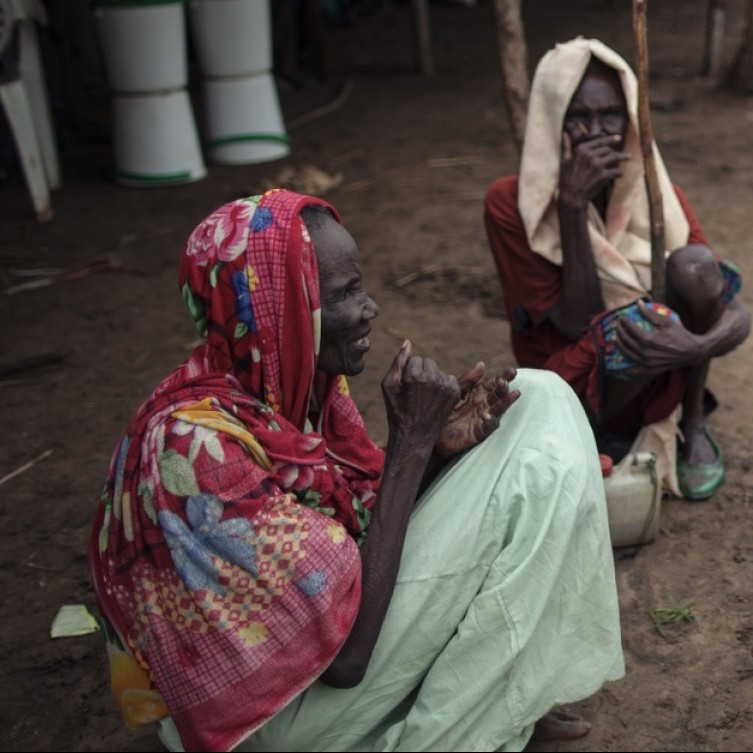Reflecting on TedxTU and UNHCR’s Emergency Lab
by Sofie Kodner
Last Thursday at TedxTU, we heard about the experiences and passions of Troy E. Spier, a humanitarian aid worker on the front lines of the Syrian refugee crisis in South-East Europe. Troy spent time at multiple refugee camps and emergency response sites, one of which was in fYR of Macedonia, a small country that shares a border with Greece. Perhaps his words made you wonder – what sort of innovation is happening on the ground of the European Refugee Crisis? Can innovation, and the inherent risk and occasional failure that accompanies it, be justified in emergency contexts? I’ve done a bit of research on the United Nations High Commissioner for Refugees’ (UNHCR) “Emergency Lab.” What follows is a peak into this innovation supported by UNHCR…
How might UNHCR enhance emergency preparedness and response? The Emergency Lab, a collaboration between UNHCR Innovation and the Division of Emergency, Security, and Supply, incubates answers to this question. The Lab works with refugees to define key challenges they face, and identifies and tests innovative solutions to these challenges.
With the Emergency Lab, UNHCR dares to try things differently in emergency contexts. There is inherent risk in innovation: in utilizing new technologies and shifting paradigms. This risk, however, is justified by the promise of greater efficiency and effectiveness in emergency operations across the globe. The Lab works to improve the refugee experience for, and with, refugees themselves. In its inaugural year, the Emergency Lab focuses on communication – Communications with Communities (CwC).
Communications with Communities is an emerging field of humanitarian response that facilitates dialogue between survivors of disaster or conflict and responders. CwC works to ensure that people who have been forcibly displaced by emergencies have access to critical information and communications needs. These needs include connecting with separated family members; knowing where and how to access services; and identifying channels to raise complaints and voice concerns. CwC is dynamic, but at its core, Communications with Communities keeps refugees at the center of UNHCR operations.
In late November of 2015, the Lab launched its premiere CwC mission in fYR of Macedonia. While the Lab is global in focus, the team in fYR of Macedonia had an immediate request for support amidst the European refugee crisis, and the responders there invited innovation. Thus, the Emergency Lab set out, aiming to add as much value as possible as quickly as possible, without being an additional burden to operations in the field.
The mission in fYR of Macedonia was split between the main UNHCR office in Skopje and the field sites in Gevgelija and Tabanovce, which are used by refugees as the main entry and exit points to the territory. The Lab began their work by scoping: getting an overview of what the narrative was for a refugee from the border, to the site, and so on. The Lab did this in true design thinking fashion – interviewing refugees about their journey and experience on site, speaking with UNHCR and implementing partner staff, and recording their own observations throughout. With this approach, the Lab develops a direct understanding of what people want and need and can thus deliver a project that truly meets the user’s (refugees) expectations.
From the scoping mission, the Lab was able to identify 10 main CwC challenges in fYR of Macedonia. Based on these challenges, the Lab speculates: How can the Lab hold informative dialogue with a rapidly moving population? Ensure refugees have access to safe, responsive complaints mechanisms? Handle diversity of language? Leverage communication channels? Avoid fragmented information management? Coordinate volunteer groups and individuals in communication efforts? Support refugees’ dignity and wellbeing? Reach sensitive topics in short periods of time? Avoid harsh weather in order to hold conversations? And overall, how can the Lab ensure need-based solutions that reflect real field challenges?
In late February of 2016, the Lab returned to fYR of Macedonia to pilot their innovative answers to the third and fourth questions above – aiming to handle diversity of language and leverage communication channels between refugees and responders. Right now, the Lab is implementing their solutions, recording additional challenges, and observing impact made. Soon, the Lab will know if their solutions improve the refugee experience in fYR of Macedonia, or if these answers require further ideation. The Lab will work to scale up successful solutions in order to enhance emergency preparedness and response across operations in all of South-East Europe, with plans to prioritize next Yemen and Burundi.
